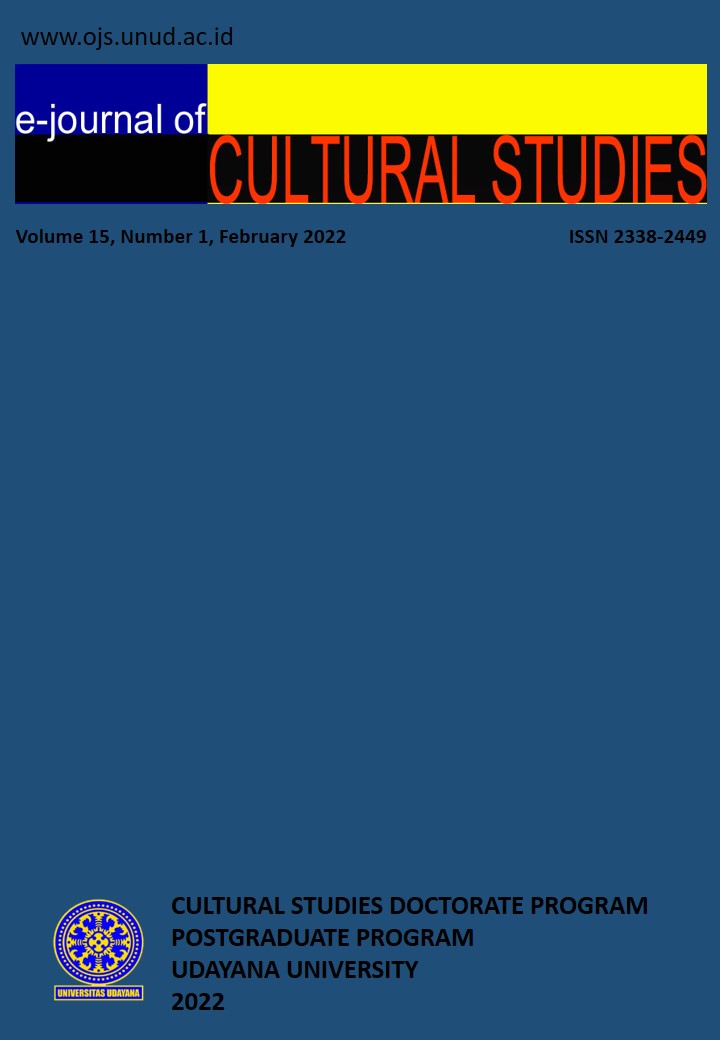TRIGGERED FACTORS OF GRINGSING TENGANAN DOUBLE IKAT COMMODIFICATION IN THE GLOBALIZATION ERA
Abstract
The double woven cloth of Gringsing, Tenganan, Karangasem Bali serves as a ritual medium in traditional, religious, marriage activities, is sacred, and weaving skills are inherited from generation to generation (habitus) from their ancestors. Globalization and the entry of the tourism industry have influenced the development of the Gringsing double ikat fabric. Development is carried out by commodifying form and meaning, so as to create products with new meanings. The purpose of this study is to identify and understand the factors that cause the commodification of double ikat fabrics in Gringsing Tenganan, Karangasem in the era of globalization. This study used descriptive qualitative method. The techniques used in data collection, namely observation techniques, in-depth interview techniques, and document studies. The collected data were analyzed using analytical techniques, verified (data display), and concluded in narratives, tables, photos, and charts. The theory used in this research is the commodification theory of Barker and Piliang. The results of the study, namely the commodification of double ikat fabrics in Gringsing Tenganan, Karangasem in the era of globalization occurred due to internal and external factors. Internal factors that support the commodification of the Gringsing double ikat fabric are the economic orientation of the Tenganan community, the orientation of equality and freedom of life as well as ideology and outlook on life. External factors such as globalization and tourism development in Tenganan Pagringsingan Village, Karangasem.
Keywords: commodification, gringsing double ikat, globalization







